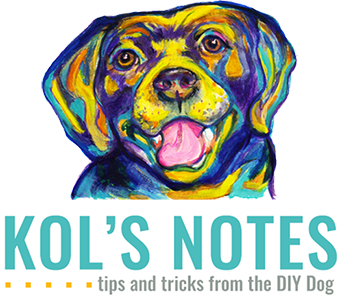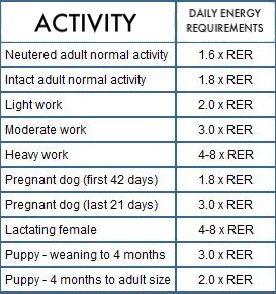As a member of the Etsy affiliate program and an Amazon Associate, I earn from qualifying purchases.
K9 Kamp is all about getting fit with Fido. We’re having a lot of fun sharing our fitness challenges with you and we love hearing how you are doing! Every great fitness coach knows that exercise is only half the equation, you have to watch what you are eating too. Do you know exactly how much your dog should be eating? How many calories they need per day? How many calories are in your treats??
OK, am I the only one who finds the labels on the dog food bags totally confusing?
OK, am I the only one who finds the labels on the dog food bags totally confusing?
Seriously, the Mama isn’t exactly the brightest crayon in the box, but these labels used to have her straight up kerfuffled. She just barely learned how to read and understand the human nutritional labels and then here comes the pet food industry, throwing her a curve ball and coming up with their own way of expressing nutrition. What the bark, guys? They say that the “simplified” dog food labels are meant to make it easier to understand, but the Mama feels like it just muddies the waters. Consumers understand the standard nutritional label, why screw with it?
Without a degree in nutrition and mathematics, it’s difficult to know exactly how much to feed your dog (or you could follow these relatively easy steps.)
The label recommendations vary wildly from brand to brand and they guidelines aren’t exactly clear. For example, the Felix is about 15 lbs. For his weight, he should be eating between 1/4 cup to 1 1/2 cup of kibble every day. If we fed him 1/4 cup, he would probably eat my tail off in my sleep out of sheer desperation. If we fed him 1 1/2, he’d end up looking like the StayPuft Marshmallow Man. Nice guideline, Kibble Company. It’s totally useless. The pet food industry covers their tails by saying that these amounts are estimates only and that you should adjust that amount to your dogs needs.
So what does your dog need? That’s as easy as A, B, C, D.
Kind of. This is where the degree in Mathematics would come in darn handy. Grab a scrap piece of paper and a calculator or if you have one handy, a math nerd.
A:
1. Start with your dog’s ideal weight. This is the weight they should be. Do a little research into your dog’s breed or talk to your veterinarian to decide what the perfect number is. Is your dog over-weight? (Check out this post & do a quick assessment.) I would suggest using their current weight minus 3 lbs. When they reach that weight, you can reduce it by another 3 lbs. Repeat until the desired weight is reached. You don’t want to cut back too much too soon.
2. Convert their ideal weight from pounds to kilograms. Apparently, all dogs are Canadian, so we’re going to calculate this business in metric. Does that make it more confusing? Absolutely, but YOU CAN DO IT. To calculate, divide your dog’s ideal weight by 2.2046
3. Calculate your dog’s RER. No No, Not their rawr, we don’t care how they sound when they growl. We’re talking about their Resting Energy Requirement. If your dog stayed perfectly still all the time this is how much would they need to eat to have enough energy for important stuff like breathing. To calculate this, take your dog’s weight in kilograms (the answer from step 2) and multiply it by 30, then add 70.
4. Determine your dog’s caloric needs. Choose the statement that best describes your dog from the chart below and multiple your dog’s RER by the suggested number below.
That’s it. Easy as Pie. Well, easy as pie that was from scratch using butter you churned using milk from the cow you raised and fruit you picked yourself. Which frankly is the best kind of pie. So let’s do the calculation, using Felix as the example:
15 lbs divided by 2.2046=6.804
6.804 x 30 = 204.12
204.12 + 70 = 274.12
274.12 x 1.6 = 438.59
Felix should eat about 440 calories per day.
A little more when we are super active, a little less when we sit on the couch eating cuddling all weekend.
That’s great, but now what? A lot of dog food brands don’t show the calorie content on the label.
B:
Most of the high end pet food companies (ie. the food you WANT to feed) are now listing the calorie content of their food right on the bag or worst case scenario, on their website. Check out your food to see if they are making this info readily available. **If your food company makes the number of kCal/cup readily available, skip down to section D, marked by the stars**
Is the info not on your bag and not available on the website?
Hold on to your math nerd – or your calculator. Go get your dog food bag – or look up the food’s nutritional information online.
1. Calculate Carbohydrate Content The dog food bag is seriously lacking some relevant info. It tells you the protein, fat, fiber & moisture. Um, hello? What about the carbs. Good thing the carbs are pretty darn easy to calculate.
100% – protein % – fat % – fibre % – moisture % – 8% = carbs %
for example, a popular brand of grain free food could look like this:
100% – 34% protein – 15% fat – 6.5% fibre – 10% moisture – 8% = 26.5% carbohydrates
2. Multiply the carbohydrate & protein content by 3.5 & multiply the fat content by 8.5
34% protein x 3.5 = 119 calories/100 grams
26.5% carbohydrate x 3.5 = 92.75 calories/100 grams
15% fat x 8.5 = 127.5 / 100 grams
3. Add the calorie content together.
119 + 92.75 + 127.5 = 339.25 calories/100 grams
Koly! That still isn’t very useful!”
You’re telling me! This is why the Mama and I are not impressed by the current pet food labelling guidelines. You shouldn’t need to be a NASA scientist to calculate this stuff. But this is the way it is. Next you need to measure how much a cup of your dog food weighs. The number will vary based on the size and density of your kibbles.
Using a kitchen scale:
1. Measure the weight of your 1 cup measuring cup when it is empty.
2. Fill the cup with kibble and weigh again.
3. Subtract answer 1 from answer 2.
This is the weight of 1 cup of your kibble. Using our example kibble, the calculation would look like this:
125 grams -5 gram = 120 grams/cup
(Kol’s Note: Don’t have a kitchen scale? Place a cup of your kibble in a baggie and take it to the bulk foods section of the grocery store. There is ALWAYS a scale there.)
OK, we’re almost done. I pinky swear.
OK, I don’t have a pinky and “dew claw swear” just sounds STUPID. I promise, OK? You have my word.
1. Divide the number of grams per cup by 10.
120 divided by 100 = 1.20
2. Multiply that number by the number of calories per 100 grams.
1.20 x 339.25 = 407 calories/cup
OMD WE DID IT.
We figured out how many calories there are per cup. It only took a bajillion years to do it!
**If your dog food manufacturer provides the number of calories per cup, jump to here**
D.
Remember back at the beginning of the post, a really long time ago, when we calculated how many calories your dog needs in a day? Yes? OK.
1. Divide that number by the number of calories in a cup of your food.
440/407 = 1.08
So Felix should get 1 cup, plus 1 1/2 tablespoons of kibble
MINUS ANY TREATS
That’s right! You should always leave room for a few rewards.
The calories in a treat can add up fast though. A Large Busy Bone Dental treat has 600 calories! That’s enough to feed Felix for a day and a half! OMD. That is…awful. the Nana used to give us those all the time!
Treats will rarely tell you how many calories they contain, but now that you’re a math whiz, you can calculate them using the same formula we used for dog food in step B.
Want a cheat sheet? Check out our K9 Kamp co-host Peggy’s Pet Place for the calories in some common treats and come back tomorrow for Tasty Tuesday, when we’ll be sharing a great low-cal treat recipe. Later in the week, we’ll tell you why diet, low fat kibble may not be the right answer to your weight woes.


